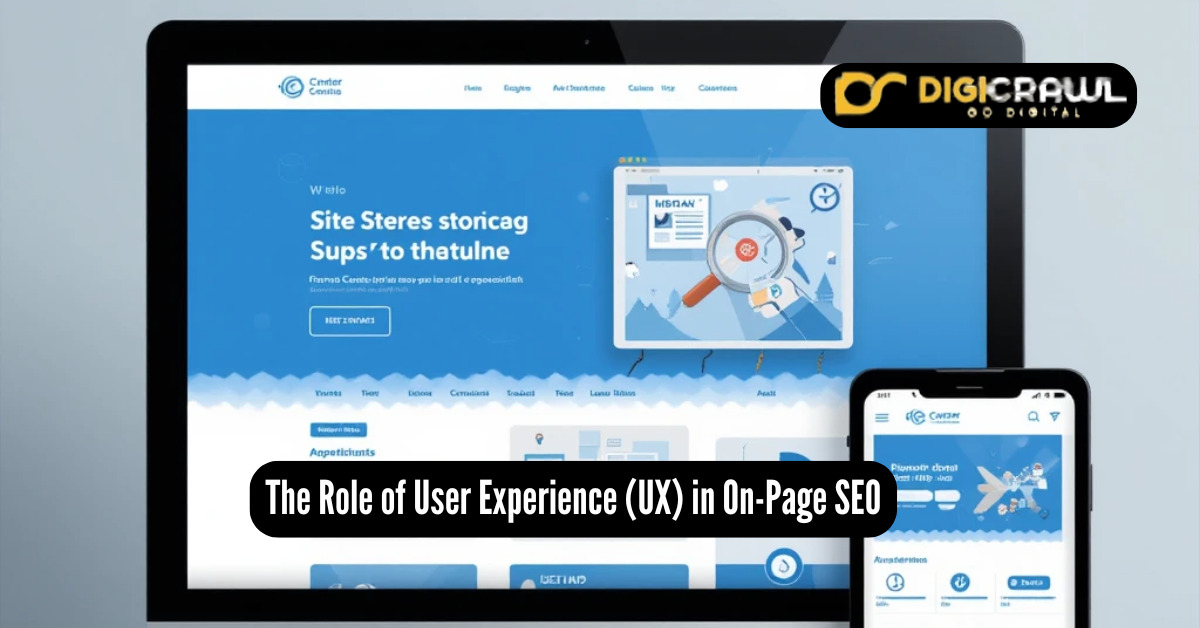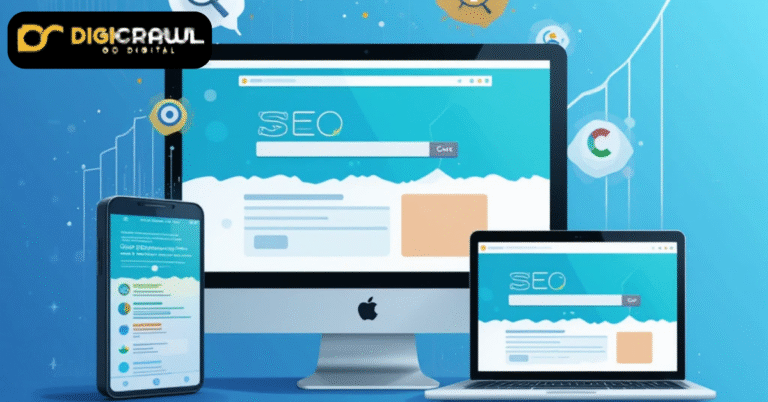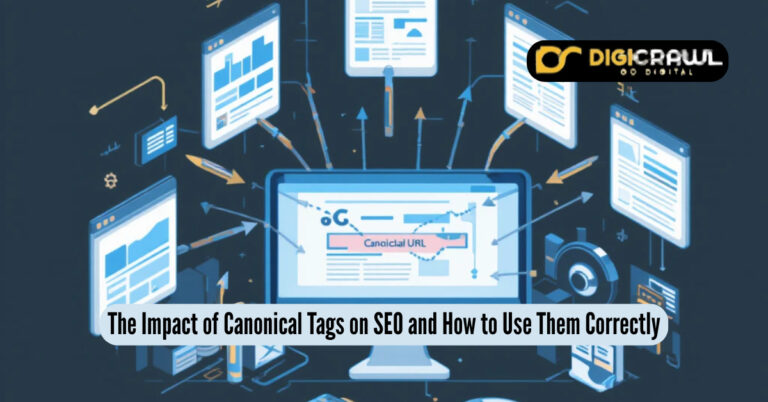The Role of User Experience (UX) in On-Page SEO
User Experience (UX) is no longer just a design factor; now it’s also a crucial pillar of On-Page SEO. Search engines now prioritize how users interact with your content, from how fast it loads to how easy it is to navigate. If you’re aiming to improve your rankings and boost conversions, start optimizing for humans, not just bots.
In this blog, you’ll discover how UX design principles like mobile responsiveness, clear navigation, visual hierarchy and readability directly influence SEO ranking signals such as bounce rate, dwell time and user satisfaction.
Why UX Matters for On-Page SEO?
When it comes to SEO, many marketers focus heavily on keywords, meta tags and acquiring backlinks. While these are vital, they’re only one part of the equation. Because the modern SEO landscape now demands optimized User Experience (UX), a core driver of how search engines like Google evaluate and rank websites.
UX refers to the overall experience a visitor has when interacting with your website. How easily they can find what they’re looking for, how quickly pages load, how readable your content is, and more.
And Google has made it clear: better UX means better rankings.
Google is aligning its algorithms with human behavior with updates like Core Web Vitals and the emphasis on Search Experience Optimization (SXO). This means UX isn’t just about pleasing visitors; it’s about signaling relevance and quality to search engines as well.
1. Site Speed: Faster Websites Win More Clicks
Site speed is one of Google’s confirmed ranking factors. A slow website frustrates users, increases bounce rates, and hurts your SEO performance.
Impact of website speed on UX and SEO:
- Poor site speed increases the chance of a user bouncing before the page even loads.
- Fast-loading pages improve dwell time and user satisfaction, which eventually boosts your SEO rankings.
Quick Tips to Improve Site Speed:
- Compress images using tools like TinyPNG or WebP.
- Minimize HTTP requests.
- Use browser caching and a reliable CDN.
- Remove unnecessary JavaScript or third-party plugins.
A study done by Google found that 53% of mobile site visitors leave a page that takes longer than 3 seconds to load.
2. Mobile Responsive Design for All Devices
More than 60% of searches now come from mobile devices, and Google uses mobile-first indexing, which means that it prioritizes the mobile version of your site and ranks based on your site’s mobile friendliness.
How does UX impact SEO on Mobile?
- A mobile-friendly site ensures users can easily scroll, tap, and consume content without zooming in or struggling.
- Poor mobile UX leads to lower engagement and higher bounce rates, hurting your SEO.
UX Design Principles to Follow:
- Use responsive design frameworks like Bootstrap or Tailwind.
- Avoid intrusive popups that disrupt mobile browsing.
- Keep tap targets (like buttons) thumb-friendly.
Test your site on Google’s Mobile-Friendly Test tool to find and fix mobile issues.
3. Clear Navigation Helps Users (and Bots) Find Content Easily
Navigation structure is essential for both users and search engine crawlers. Because if users can’t find what they need quickly, they’ll leave your page and even crawlers won’t be able to index your content properly.
Impact of clear navigation on UX and On-Page SEO:
- Logical navigation helps users flow through your site with minimal friction.
- Flat site architecture makes it easier for crawlers to index all pages.
What are the key elements of SEO-friendly navigation?
- Use descriptive menu labels (e.g., “SEO Services in Pakistan” instead of “What We Do”).
- Keep the menu hierarchy shallow (3 levels max).
- Include internal links to improve crawlability and user engagement.
For Example; Need better navigation and visibility? Explore our Digital Marketing Services in Islamabad to get started.
4. Readability and Typography: Content That’s Easy to Digest
If your content is hard to read, users won’t stay long, whatever the reason is, whether it’s due to poor formatting, font size or structure. That directly impacts bounce rate and dwell time, both of which influence SEO.
Good UX Means Better Readability:
- Use clear, consistent font styles and sizes.
- Break content into short paragraphs (3-4 lines max).
- Include subheadings, bullet points and bolded text for scannability.
How to increase readability for Quick Wins for SEO and UX?
- Use the Flesch Reading Ease tools to simplify text.
- Choose high-contrast color schemes (e.g, dark text on a light background).
- Avoid jargon unless necessary and write like you’re explaining to a beginner.
5. How do User Signals like Bounce Rate, Time on Site and Engagement improve SEO?
While user signals such as bounce rate and time on site are not direct ranking factors, they are correlated with SEO performance. Google aims to show results that satisfy user intent, and behavioral signals help determine that.
How UX Design Improves These Signals:
- Engaging design and helpful content reduce bounce rates.
- Engaging page layouts keep users on-site longer.
- Interactive elements (e.g videos and accordions) encourage exploration
These are the Common UX Pitfalls to Avoid:
- Cluttered layouts that distract users
- Hidden or hard-to-click CTAs
- Autoplay videos or music that annoy visitors
According to Semrush, sites ranking on the first page of Google have an average bounce rate of 49% or lower. Which means you have to improve your bounce rate at least by 50% to rank on Google’s first page.
6. Guide the User Journey by Visual Hierarchy and Layout
A well-structured visual hierarchy layout boosts engagement, improves CTA visibility and enhances content consumption. It helps users quickly understand what’s most important on the page.
Key UX Elements of Hierarchy That Affect SEO:
- Proper use of H1-H6 heading tags for structured content.
- CTAs that stand out without being aggressive.
- F-pattern or Z-pattern layout to align with natural reading behavior.
Best UX Practices for Layout:
- Place critical content above the fold.
- Use whitespace strategically to avoid cognitive overload.
- Maintain consistent design across all pages.
Use tools like Hotjar to analyze user behavior and refine layout based on heatmaps and scroll data.
Common UX Mistakes to Avoid in SEO
Some marketers unknowingly sabotage their SEO by overlooking UX even with the best intentions. Here are a few red flags:
No clear CTA – Users land on the page but don’t know what to do next.
Too many popups – They create friction, especially on mobile, which feels annoying.
Inaccessible design – Failing to account for users with disabilities (e.g; poor contrast and no alt text).
Heavy imagery – Slow load times kill User Experience and SEO altogether.
Combined UX and SEO Strategy for the Future
Those days are gone when SEO was just about stuffing keywords. Because now, Google rewards websites that put users first and more importantly, UX is at the heart of that shift. You’re not only pleasing your audience but also earning favor with search engines by creating fast, accessible, engaging and easy-to-navigate pages.
Integrating UX and SEO is the new standard for Search Experience Optimization (SXO), where user satisfaction directly fuels search rankings.
Conclusion
Your rankings may be suffering more than you think if your site loads slowly, appears cluttered or frustrates users on mobile.
The good news? Fixing UX issues often leads to immediate SEO benefits, better engagement, and more conversions.
Which means: start optimizing for users, and Google will follow.
SEO isn’t just about pleasing search engines; it’s about providing value to real people. The better the experience, the better the ranking.
Explore our full range of SEO services in Pakistan and take the first step toward building a high-performing, user-focused website. Or check out our Digital Marketing Services in Islamabad to get a complete strategy tailored for your business goals.







